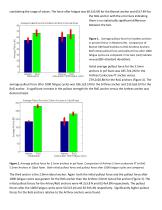
Catalog excerpts

Laboratory and Clinical Validation of RoG Anchors. William Rhode, PhD Rhode Orthopedic research Institute Disclosure: The author did not receive payments or services, either directly or indirectly, from a third party in support of any aspects of this work. The author has not had any financial; relationship, in the thirty six months prior to submission of this work, with any entity in the biomedical arena that could be perceived or have the potential to influence what is written in this work. Laboratory Validation. Purpose. FDA510(k) approved shoulder anchors were tested for performance by an independent laboratory to ensure that they performed equivalent to Arthrex and Biomet anchors that are considered to be orthopedic standards. The goal of RoG Sports Medicine is to streamline the supply chain in order to substantially reduce anchor costs while maintaining a level of performance equal to the best in the orthopedic supply business. A case series of 90 consecutive patients that were implanted with these anchors showed no known defect of the anchor/suture combination. Background. The anchors are made of Zeniva® polyetheretherketone (PEEK) resin from Solvay Advanced Polymers, LLC. Zeniva PEEK is manufactured in compliance with the relevant aspects of ISO 13485 and under the relevant aspects of current Good Manufacturing Practices. Solvay's biomaterial manufacturing processes are carefully validated and enhanced controls provide product traceability. In addition, all materials are tested in an accredited lab that is ISO 17025 compliant (Orchid Design1). Zeniva PEEK offers numerous advantages over metals such as titanium for these implantable devices. The material offers many important benefits including biocompatibility, chemical inertness, and a modulus of elasticity that is close to that of bone. It boasts high strength and stiffness and is totally radiolucent enabling the surgeon to clearly see the bone/soft tissue interface on x‐rays without the shadows and opacity of titanium. Methods. Orchid Design performed the laboratory pullout testing on the RoG anchor line that consisted of a 5.5mm rotator cuff anchor, a 2.9mm labral anchor, and a 5.5mm knotless anchor2. An MTS Q/Test10 Test Frame with a load cell was used to test pullout strength. The knotless anchors were tested in porcine femur while all other anchors were tested in 5, 10, and 20 pounds per cubic foot (pcf) foam. Only results from the 10 pcf foam are shown here. The 5 and 20 pcf test results were consistent with those of the 10 pcf foam tests. All forces are given in Newtons (N). Results.
Open the catalog to page 1
considering the range of values. The force after fatigue was 60.5±5.6N for the Biomet anchor and 65±7.4N for the RoG anchor with the error bars indicating there is no statistically significant difference between the two. Figure 1. Average pullout force for knotless anchors in porcine femur in Newtons (N). Comparison of Biomet Alltrhead Knotless to RoG Knotless Anchors. Both initial pullout force and pullout force after 1000 fatigue cycles are compared. Error bars (red) indicate mean±σ(SD=standard deviation).
Open the catalog to page 2
Materials and Methods. A series of 90 consecutive patients underwent shoulder arthroscopy with rotator cuff repair (N=68) or SLAP repair (N=18). The average age of the patient was 49 years old (31 to 75 years) with 68 males and 22 females participating in this study. All patients were followed up postoperatively. Number of anchors used and rotator tear size was documented. All patients underwent monthly clinical follow up (N=7.2 months). At the patient's initial postoperative ...
Open the catalog to page 3
